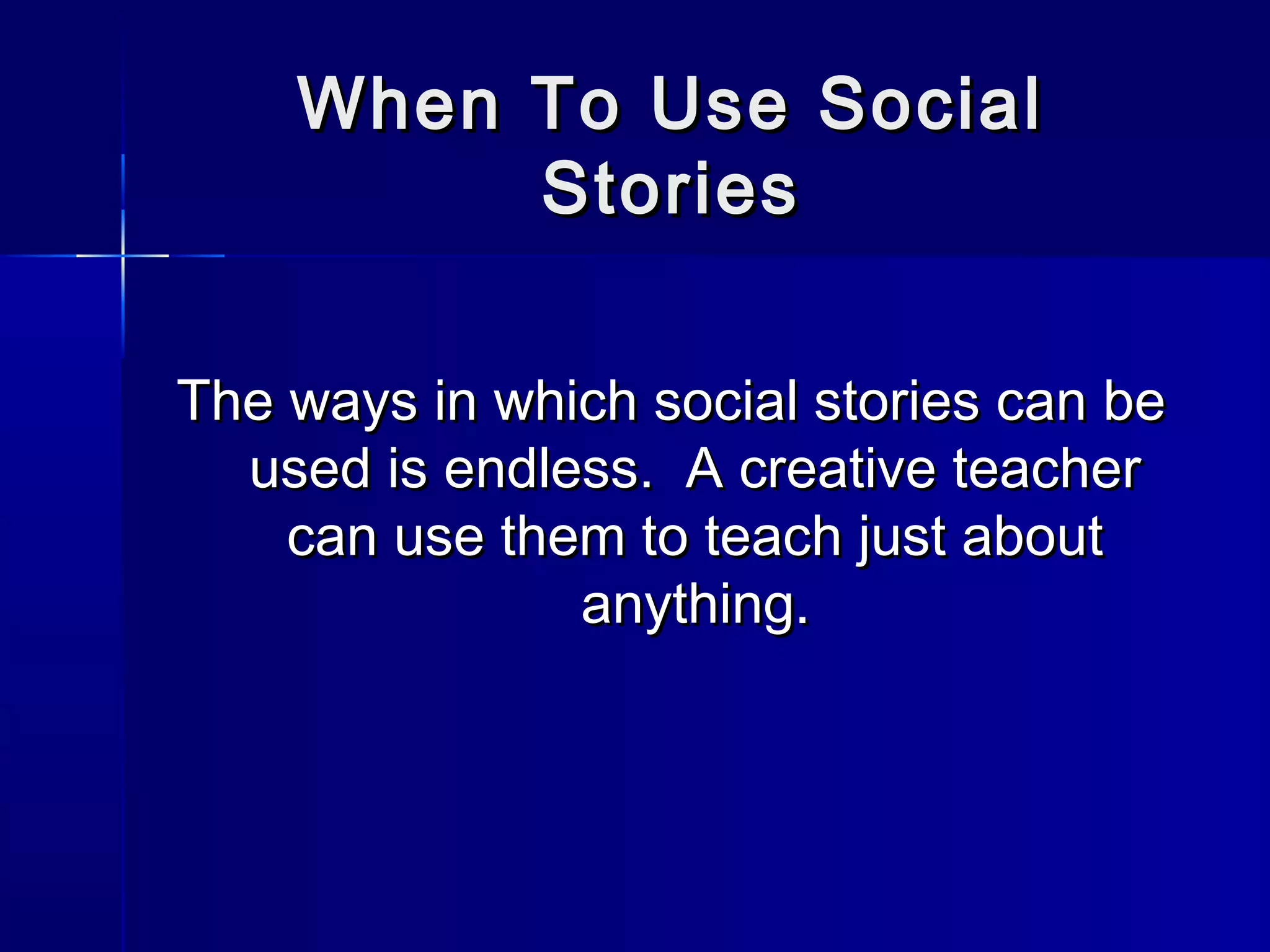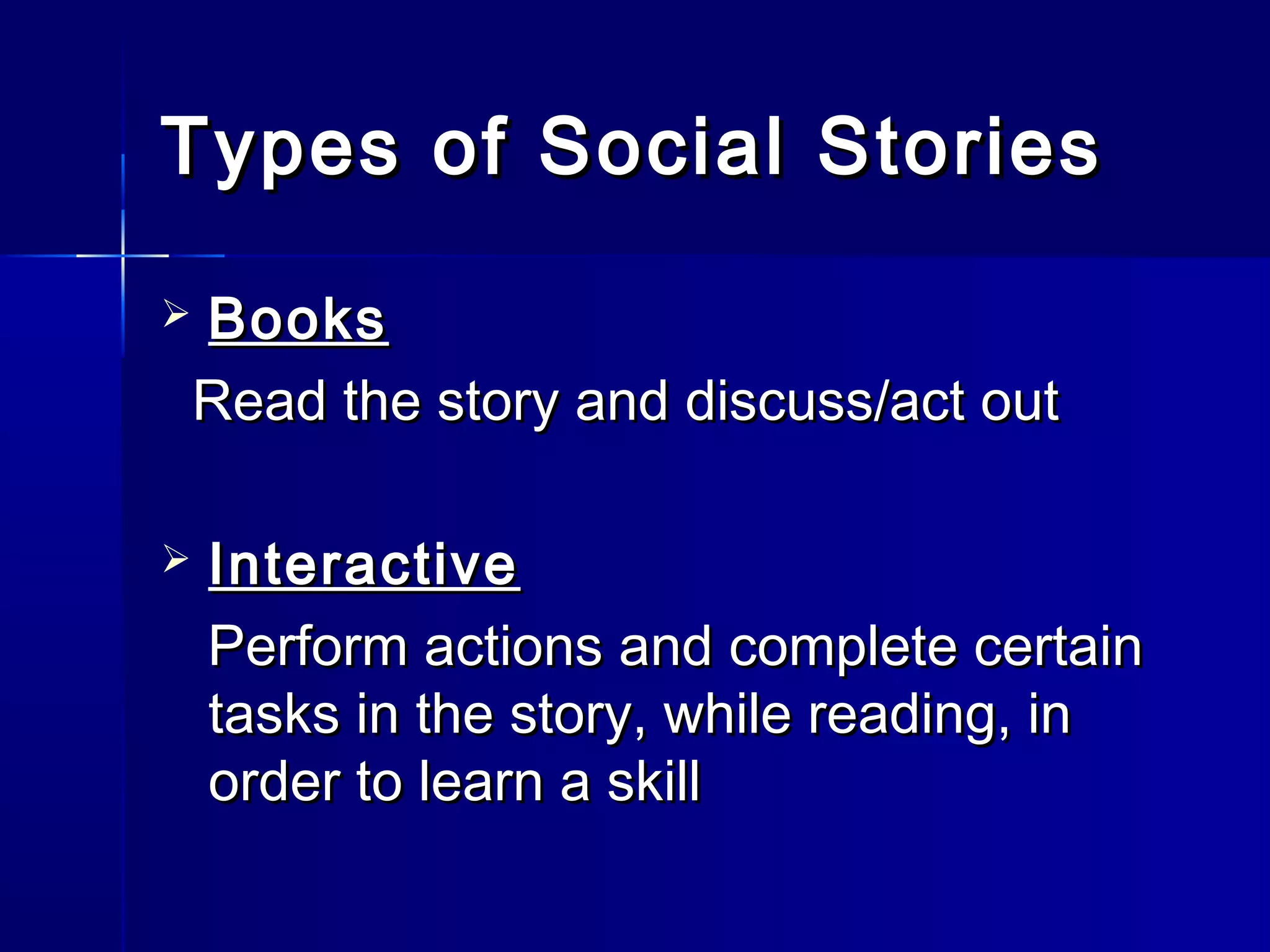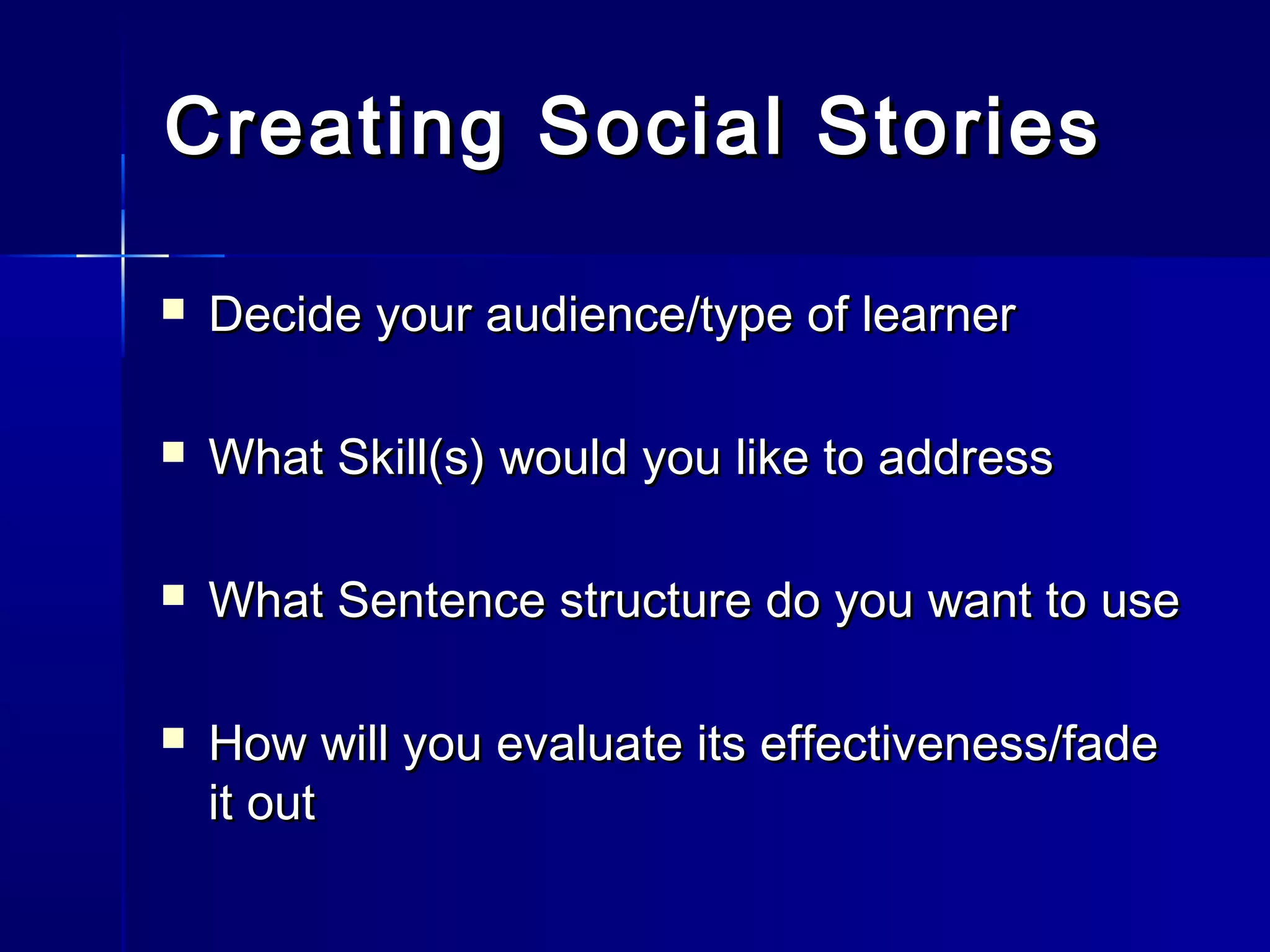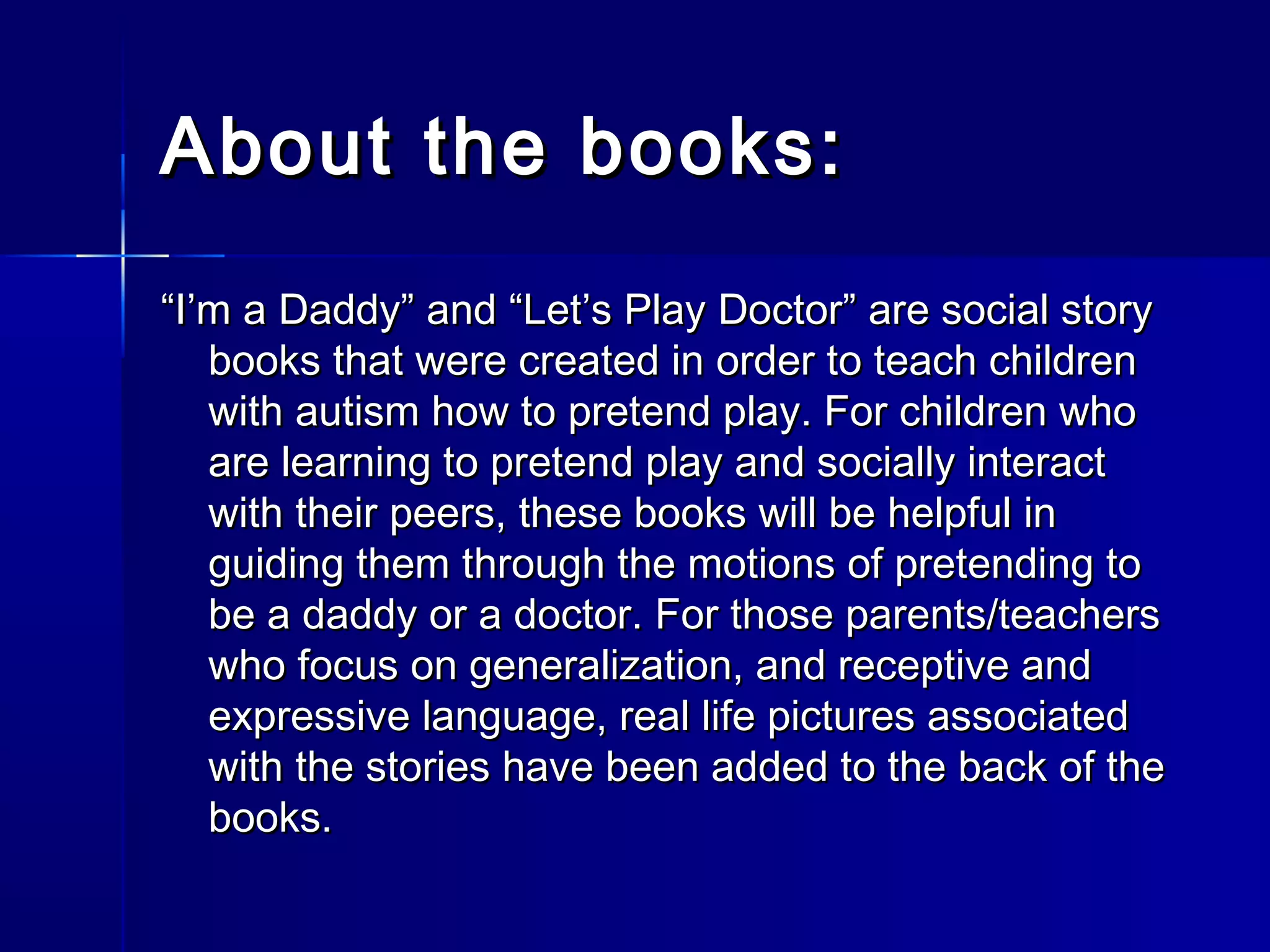Social stories are short stories created by Carol Gray in 1991 to help people with autism and social disabilities understand social situations and contexts. They describe social cues and skills to improve social understanding. Social stories are especially beneficial for children with autism by addressing their theory of mind impairment and difficulties with perspective taking. They can be used to incorporate pretend play skills by outlining steps of pretend activities through text and pictures.
















